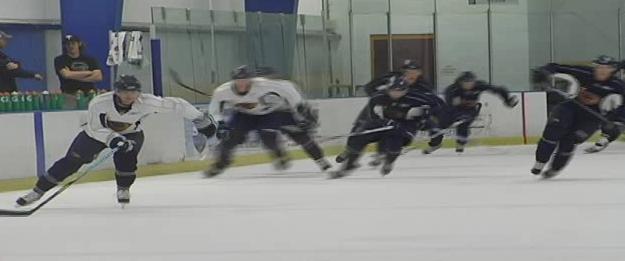With the news that the Winnipeg Jets/Manitoba Jets/Falcons/etc. etc. announced Kevin Chevaldayoff as the new General Manager of the team, I wanted to take the time to outline how Illegal Curve will look at prospects/drafts/college free agent signings, and to ask for feedback from readers on the same.
I think it’s important, for the time being, to give the incoming boss a clean slate. Given a quick perusal of the current crop of prospects, I think it’s fair to say that this is somewhat of an underwhelming group. There are some good players on the list, to be sure, with the likes of Carl Klingberg, Patrice Cormier and Spencer Machacek at the top of the heap. That said, very few players of the current crop are likely to be first-line impact players at the NHL-level. With this in mind, I would give the group a C+ rating as a whole.

Going forward, it is imperative that Chevaldayoff and crew improve this group in a big hurry. The team will be playing in a very competitive Western Conference (eventually), and will need to draft well and be proactive in scouting the college ranks for useful players if they want to compete.
As a measuring stick, I propose that Illegal Curve takes three different measurements to gauge the success rate of each draft. College free-agent signings from the spring preceding the draft will be included in that years class, regardless of age. The first measurement will be the number of potential impact players drafted, traded for (prospects/picks only) and signed in that year. The word potential will be defined by a panel of Illegal Curve contributors and weight will be given to draft day steals (players who were not thought to be available when the Winnipeg team is set to pick). A letter grade will be assigned at this time, with the hopes that there is room for improvement.
The second measurement will be taken three years from the draft date, and will focus on the player’s progress in whatever league they are playing in currently. If the player has graduated to the NHL, for example, points will be given for not only the movement upwards but for the work said player is doing at that level. If the player is in the AHL kicking out the jams, that’s worth something, as is tearing up their respective college leagues, etc. A letter grade will be assigned at this time, as well as a comparison to the draft day grade.
The third and final measurement will be taken five years hence. The only two ways to score points here will be for a graduation to the NHL (and level of success at the big leagues) or for an imminent call-up (giving credence to the school of thought that defenders and goalies take longer to ripen). Points will be deducted for a bust, and the criteria for a bust will again be determined from a panel of Illegal Curve Experts (and David).
I am looking for feedback from readers on the system as proposed, as well as thoughts on how we could better measure the incoming prospect pool. It is an inexact science to be sure, but its nice to have parameters set forth so we know what to expect from both management and from draft classes. Incoming general managers will not be tagged for grades earned from past gm’s, but the organization as a whole has to live and die with what its employees do.
So, IC readers, how to we measure this? Do we have a good system, or can you do it better?


